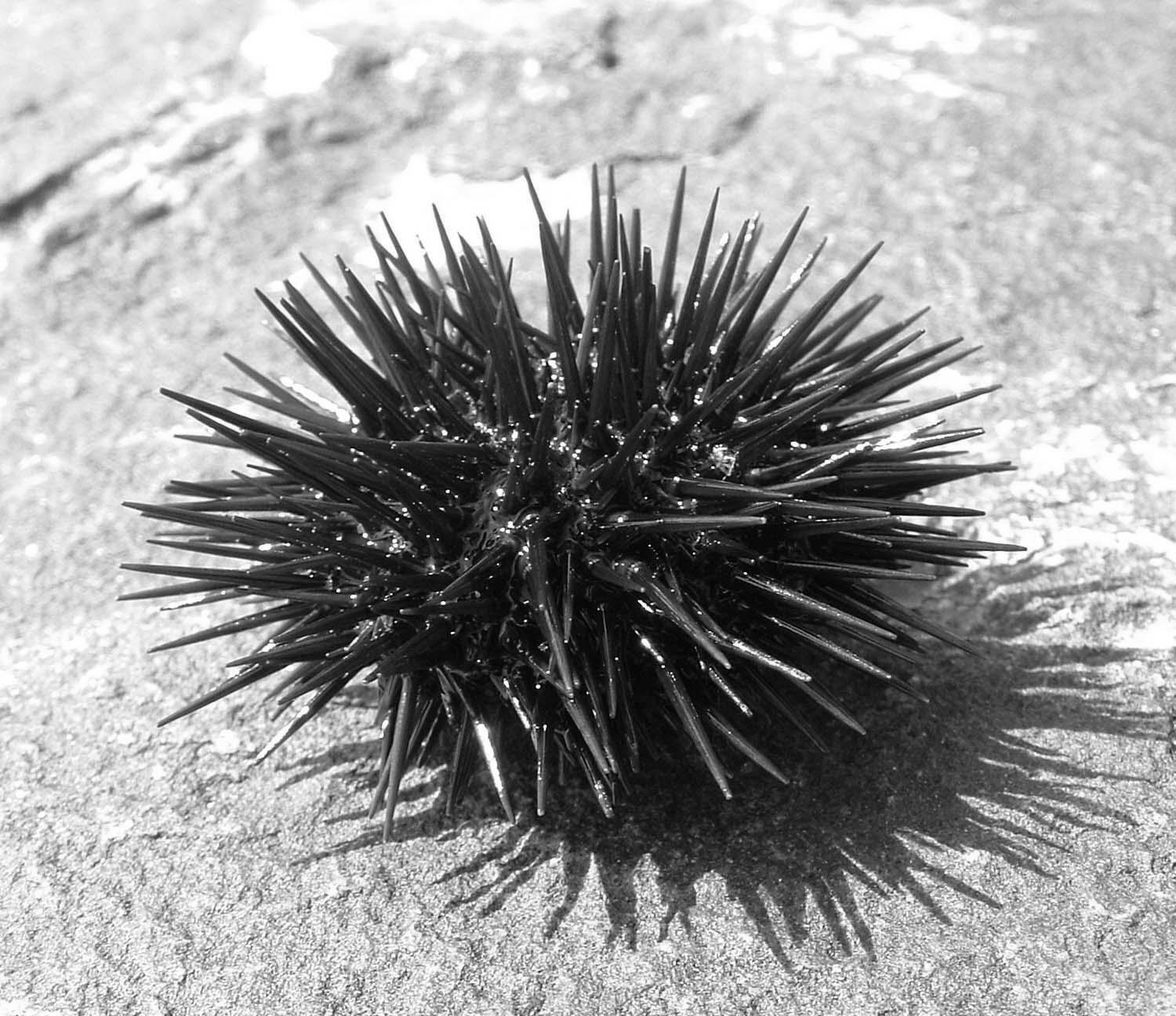Desert Urchin
Desert Urchins are spine covered semi-stationary creatures that live in the desert of Orongo.
Basic Information
Anatomy
Desert Urchins resemble sea urchins, but are much larger. They often cling to the side of walls and mesas or hide out in caves. Their bodies are covered in thick spines they inject venom into anything that touches it. While they venom is non-lethal, it can paralyze a man for up to four hours, long enough for the creature to crawl over and begin to consume their prey. They have a mouth on the top of their head that they use to filter feed out pollen and moisture from the air, and a second cutter mouth underneath that they use to eat prey.
Genetics and Reproduction
It's believed that Desert Urchins primarily breed via budding. Once an urchin gets too big, it will stop and harden into a shell, eventually the shell will smash open and a group of 200-300 pups will roll out.
Growth Rate & Stages
There are three stages to Desert Urchins.
- Pups, a spineless quick and speedy rolling infant. They roll around for four to five days until they find a location where they feel best suited. They are very weak and exposed at this time.
- Young adult, these urchins quickly grow their barbs and are mostly stationary for about two weeks while their shell hardens.
- Adult, the vast majority of an urchin's life is in this stage. Their shell has hardened and they hardly move unless they sense prey.
Dietary Needs and Habits
Desert Urchins can survive years, even decades without a meal. Because they hardly ever move, they conserve calories quite well. When urchins finally to get a proper meal out of something that triggered their venom, they will usually shatter their shell and grow larger and lager for a few weeks before finally hardening once again.
Additional Information
Uses, Products & Exploitation
Some brave people do attempt to harvest Desert Urchin venom, but the creatures venom loses it's potency minutes after it's death.
Harrix also have to consume a few Desert Urchins a year in order to be healthy. They are immune to the venom and their skin is too hard to pierce with their barbs. They may be reliant on the calcium that the urchin's shells provide.
Perception and Sensory Capabilities
Urchins are blind and cannot see or hear. They are believed to be able to smell somewhat poorly but rely on that as their main source of non-contact sensory. They are believed to be incredibly sensitive to touch and can feel their recently removed barbs indicate where their prey is for up to an hour.
Lifespan
Unknown, at least 100 years +
Body Tint, Colouring and Marking
Urchin's bodies are often gray and black, but the pups are more yellow. Their spines are usually a very dark purple or black.
Geographic Distribution



Comments